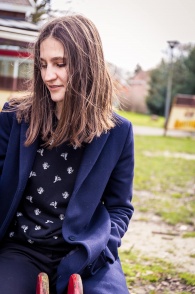What it does
Our product, LADflow, solves the problem of highly invasive cardiac surgery. A patient who undergoes such a procedure will need to recover for at least 3 months. We Offer a less invasive approach that allows the patient to potentially recover in 1 week.
Your inspiration
Coronary Artery Disease (CAD) is on the rise worldwide. It has a prevalence of 7.3% among the general population and is one of the major causes of mortality worldwide. Patients with this condition are generally treated with Percutaneous Coronary Intervention (PCI). When PCI fails to deliver, a surgical approach, such as Coronary Artery Bypass Grafting (CABG), is considered. We believe that minimally invasive surgery has many advantages over conventional cardiac revascularization therapy (such as CABG).
How it works
LADflow is a stent-like product, but used in a different way. With a body that resembles the one of a stent and a specially designed "head" with 12 hooks. LADflow is delivered on a catheter, which means the product is squeezed into a smaller size and mounted onto a long device so that it can be transported through the arteries. The goal of LADflow is to perform arterial revascularisation by means of coronary anastomosis, designed for, but not limited to, the Left Anterior Descending (LAD) coronary artery. The design of the product allows for a precise anastomosis of two arteries. The parts of the product, head and body, are designed to anchor and lock them together to enable a stable and strong connection and allow a blood flow. The approach on itself is revolutionary as it uses already established techniques like endovascular access, to deliver the device and thoracoscopic surgery to assist in bringing two arteries in different anatomical regions.
Design process
The project initiated with desk and field research. Some obvious surgeries such as a Coronary Artery Bypass Grafting (CABG), a PCI (stenting) procedure and a lung resection through thoracoscopic approach, gave me insight on what happens inside the body, as well as around the surgeons. This way I could establish a good understanding of the regular workflow in an operating room. To understand more of the human tissue I experimented with pig hearts, this educated me on the dimensions, complexity and strength of vessels on a heart. I spoke a lot of experts that were not all related to the hospital. Material experts and physicists helped me in the process of finding the right material for the product. I needed to understand the way biocompatible materials worked and what was needed for a product like ours. The material we ended up using is Nitinol, a biocompatible super elastic metal, not uncommon in the medical world. In a later stage, a concept was born. I recreated several stages of the actual procedure with mock-up products to give a dimensional insight. When the product became more detailed I went back to pig hearts. I used Nitinol wires to recreate the real measures of the product and tested the strength and force needed to perforate the tissue, and establish feasibility.
How it is different
We believe that a standardized, easy-to-reproduce, cost-effective way of making vascular anastomosis is the future of cardio vascular surgery. Our device could deliver all that. What makes the design of LADflow unique is twofold. LADflow adopted the remarkable ability stents have to change their size inside the arterial tissue. This ability, together with the possibility to perforate and connect arteries that are anatomically in different areas of the human body is a new approach to the use of stents. The technique can be applied with regular medical tools, which makes for a low learning curve and adaptability.
Future plans
A credible product is on the table, ready for prototyping. Experts and medical companies have expressed their interest. We need to build a few working prototypes in vitro to create a proof-of-concept and prove reproducibility. Next in vivo testing will be necessary. Although expensive, this prototyping phase is of major importance to validate and ensure safe and effective use of LADflow's procedure. Our development can be swift, as it concerns a medical device, and because we use some already established techniques, combined with the revolutionary design of LADflow we can move quickly to in vivo use after clearing feasibility.



Share this page on
LinkedIn
Facebook
Twitter